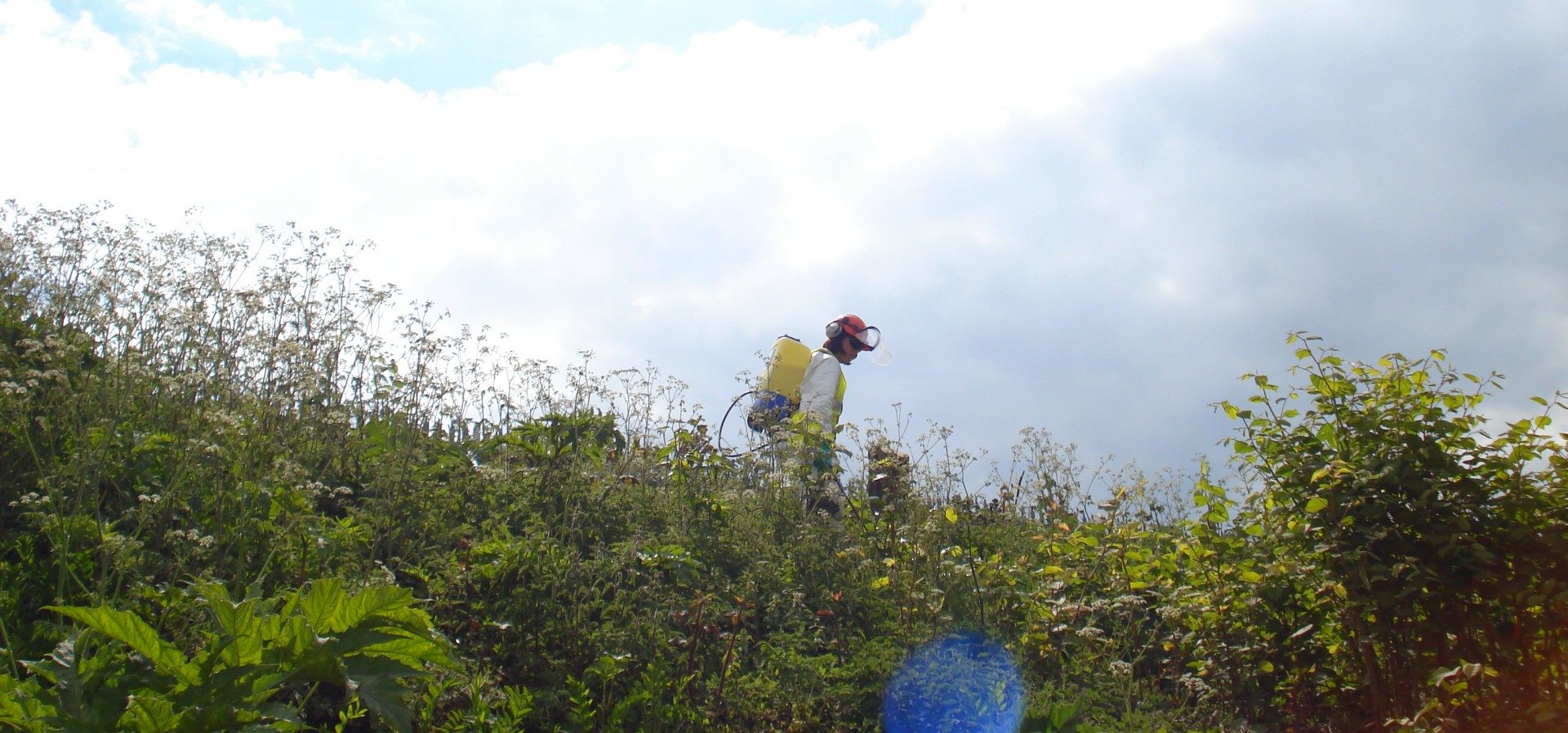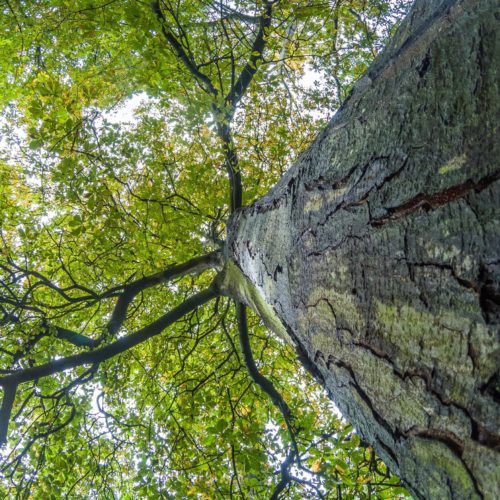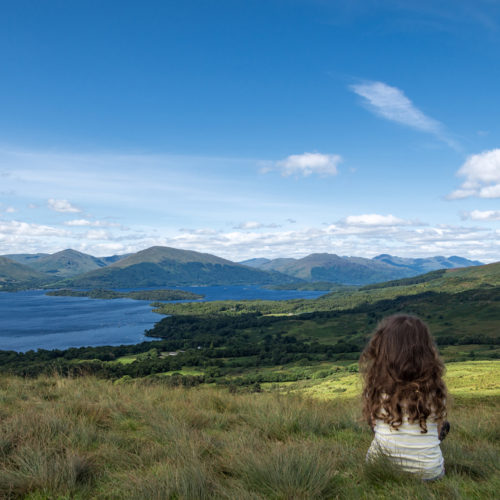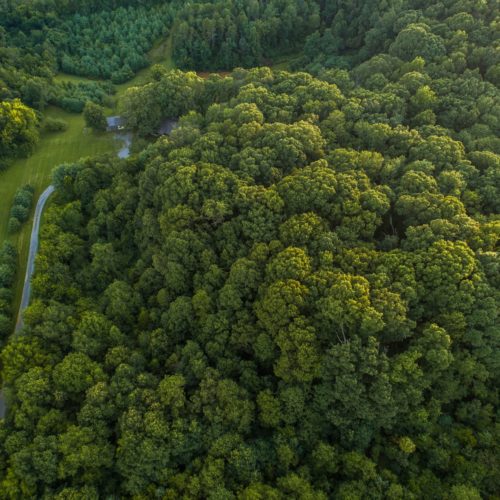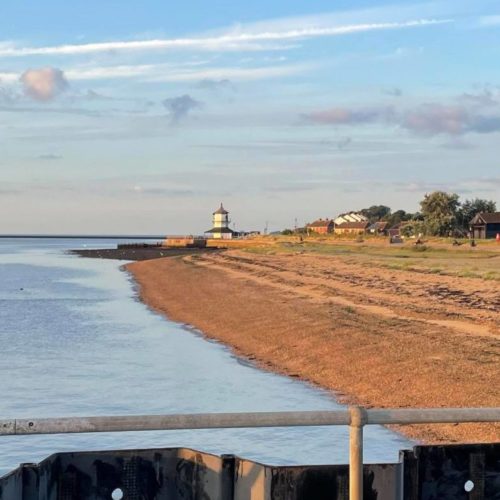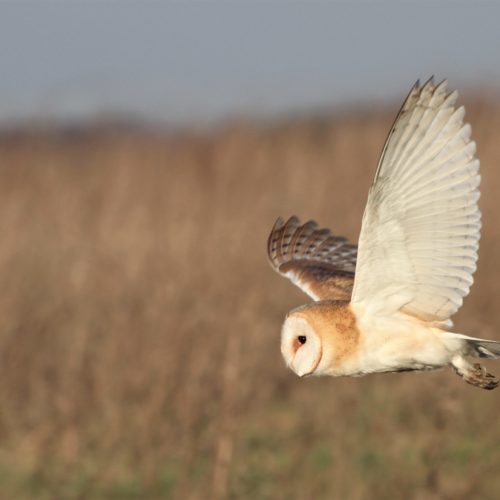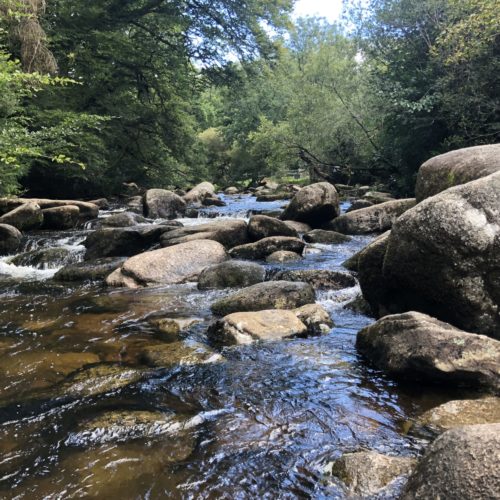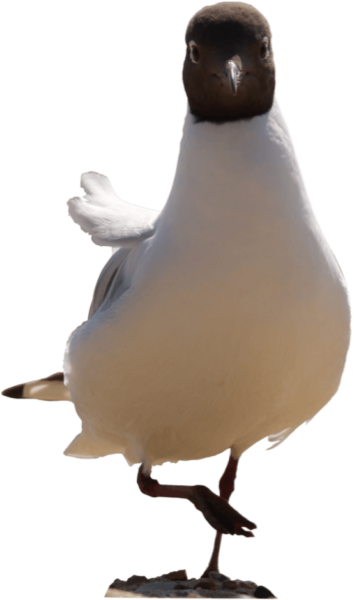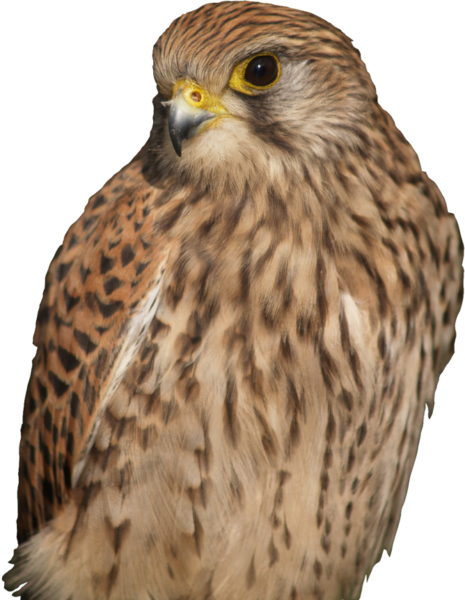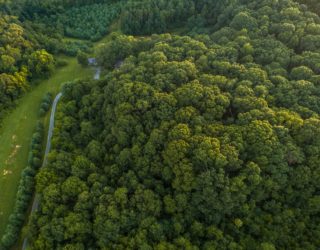Invasive non – native species (INNS) can create a serious problem, not only on development sites, but also on commercial and residential properties, railways, watercourses and in ecologically sensitive areas.
Current legislation means that landowners and developers are responsible for ensuring that any invasive species which are on their property do not spread outside of the boundary.
Thomson environmental consultants (TEC) provide specialist INNS consultancy, that includes surveys, digital mapping, remediation works and treatment or disposal services. We pride ourselves on providing a bespoke service and we take the time to understand how they are impacting the site or any planned development works.
Thomson environmental consultants are highly skilled and experienced in the control and management of Japanese Knotweed, as well as other invasive non-native species. We have an exceptional track record of working on national infrastructure projects, commercial and housing development sites, flood defence, rail, highways, renewables as well as for domestic customers.
We are able to provide a ‘one-stop’ solution, integrating environmental consultancy and contracting – from the initial survey to the completion of the recommended remedial works with a tailored approach that takes into account the project programme and aims to minimise both time and costs.
We have Certificated Surveyors in Japanese Knotweeed (CSJK), which is part of a comprehensive training programme developed by the Property Care Association (PCA) to provide a recognised standard for the control of Japanese Knotweed. It covers in detail identification, ecology, legislation, ecological and economic impacts, biosecurity, waste management and control options for this notorious plant.
As an accredited member of the PCA, Thomson environmental consultants can offer complete management and eradication plans for Japanese Knotweed and can also provide an Insurance-Backed Guarantee (IBG) following the completion of the works. To remain a PCA member, we are audited to ensure we continue to meet and maintain high standards of professionalism and expertise. This gives our clients reassurance that we are providing the highest-quality service and following best practice guidelines.
Invasive plant species services we provide include
- Initial advice and consultation
- Site survey to map and identify invasive species and any associated site constraints, together with a survey report
- Production of priced remediation strategies, detailing the findings of the surveys, and methods for treatment
- Clerk-of-work services for remediation
- Herbicide treatment
- Excavation and on-site stockpiling
- Excavation, haulage and off-site disposal
Types of invasive species
Japanese Knotweed
Japanese Knotweed (Reynoutria japonica) is listed under Schedule 9 to the Wildlife and Countryside Act 1981 and therefore it is an offence to plant or otherwise cause it to grow in the wild. Under the Environmental Protection Act 1990, Japanese Knotweed is classified as controlled waste.
It was brought to Britain from Japan as an ornamental garden plant in the mid-nineteenth century. It has now become widespread in a range of habitats, particularly roadsides, riverbanks and derelict land where it can cause serious problems by displacing native flora and with the potential to cause structural damage. It spreads rapidly in the wild by natural means or as a result of human activity.
Herbicide treatment of JKW is the least expensive of all the possible remediation controls and is suited for areas of land that are not going to be disturbed. However, it is likely to take approx. 5 years for the control to be achieved and confirmed.
Stockpiling of the contaminated material is only an option if there is enough room on the site to accommodate it and the area is situated away from boundaries and watercourses. Any new JKW growth from the stockpiled material should be subject to a herbicide treatment plan. It may be possible to re-use the soil in the local area, but careful consideration should be given to how this would work in practice.
Excavating the contaminated area and disposing of it off site is often the most expensive option. The contaminated soil should be taken to a facility that is approved to receive such material and is transported there by a registered waste carrier. If space allows, the contaminated material could be buried on site – either to a depth of 5 metres or within a fully encapsulated cell to a minimum depth of 2 metres. It is important to ensure that the cell is large enough to accommodate all the excavated material before any works are started!
Himalayan balsam
Himalayan balsam (Impatiens glandulifera) is listed under Schedule 9 to the Wildlife and Countryside Act 1981 and it is therefore an offence to plant or otherwise allow this species to grow in the wild. Himalayan balsam is classified as controlled waste.
It was introduced as a garden plant in the early 19th century but is now widespread in the UK, especially along urban rivers and damp areas, including woodlands and streams. It often grows in dense stands and outcompetes native species, leaving the ground bare in winter and then susceptible to erosion. It spreads its seeds by an explosive seed head, which, as they are small and buoyant, are easily carried by water.
As the plants are shallow-rooted and usually found growing in damp areas, they are very easily pulled up by hand. However, this method of control is only possible when there is only a small infestation.
For larger-scale infestations, the plants can either be strimmed or mown or treated with a suitable herbicide. If necessary, the soil containing the plants and the ‘seed bank’ can also be excavated.
The control works should all be completed before the seeds have time to set, otherwise, the time needed to achieve the level of control will be increased. Leaving the seeds in the ground will require management of the area over several years until the seed bank has finally been exhausted.
Giant Hogweed
Giant Hogweed (Heracleum mantegazzianum) is listed under Schedule 9 to the Wildlife and Countryside Act 1981 and therefore it is an offence to plant or otherwise cause it to grow in the wild. Under the Environmental Protection Act 1990, Giant Hogweed is classified as controlled waste.
It was introduced to the UK as an ornamental plant and first recorded in the wild in the late 19th Century. It is now found across much of the UK, and it is easily recognised by its height of up to 5m. It is often found on riverbanks and is able to distribute its seeds in the water or in the wind.
Contact with any part of this plant or any tools or clothing that have been in contact with the plant, must be avoided, as even small amounts if its sap can cause blistering of the skin following exposure to sunlight. Careful thought and planning is required before any works take place near this plant. It is therefore advisable that professional organisations are engaged to manage any Giant Hogweed infestations.
The aim of the control measures are similar to those for Himalayan Balsam – to prevent the plants from being able to set seed and simultaneously exhausting the seed bank. This is achieved either by removing the seed heads if they have been left to develop, or preferably deploying an early approach and cutting the tap root or through herbicide application to the plants at an early stage of their growth.
Floating pennywort
Floating Pennywort (Hydrocotyle ranunculoides) is listed under Schedule 9 to the Wildlife and Countryside Act 1981, and it is, therefore, an offence to plant or otherwise cause this species to grow in the wild.
It first became naturalised in the 1990s in North America as a result of plants being discarded into rivers from garden ponds. It can be found growing on the surface of still or slow-moving freshwater. Growing up to 20cm per day it will out-compete native species by blocking out the light and causing deoxygenation. The plants form dense mats of floating vegetation on the water surface causing problems with drainage systems and sluices and localised flooding.
The characteristic ‘kidney shaped’ leaves have a crinkled edge varies little throughout the year but are mainly to be found at the water’s edge in winter.
INNS that grow in water bodies are more difficult to control owing to the added Health and Safety issues that are associated with the works. The plants are often in areas that are difficult to reach or control and with the added difficulty of preventing any cut material from spreading further down the water course. Depending on the scale of the infestation, the plants can be controlled by mechanical means, cutting and pulling or alternatively, with a herbicide treatment.
It is important that good ‘bio security measures’ are used, the ‘Check, Clean, Dry’ approach should be used to stop any transfer of the plant material between water courses. Permission will also be required from the Environment Agency if herbicides are to be applied in or near a watercourse.
Australian swamp stone crop
Australian Swamp Stone Crop (Crassula helmsii) is listed under Schedule 9 to the Wildlife and Countryside Act 1981, and it is, therefore, an offence to plant or otherwise cause this species to grow in the wild.
It was first introduced from Australasia in 1911 as an oxygenating plant for ponds, but it has spread rapidly since the 1970s. It can be submerged, emergent and terrestrial and reproduces from very small stem fragments. It is easily recognisable when growing at the edges of water bodies by its fleshy leaves.
This plant forms dense carpets across the water surface, so excluding all other competitors reduces the biodiversity of the water body and causes problems with drainage systems and sluices.
It is important that good ‘bio security measures’ are used, the ‘Check, Clean, Dry’ approach should be used to stop any transfer of the plant material between water courses. Permission will also be required from the Environment Agency if herbicides are to be applied in or near a watercourse.
Buddleia
Buddleia (Buddleja davidii) is more commonly known as the Butterfly Bush, as its long, purple flowers attract butterflies and moths in the summer months. It was introduced to the UK in the 1890s from China but is now widespread across the country, often found growing on wasteland, railways and derelict areas.
It produces large quantities of seed, even in the early years of its growth, which are easily carried by the wind into new areas, assisting its ability to quickly colonise new areas and small cracks and crevices in brickwork, often up high up off the ground. It is not uncommon to see Buddleia bushes growing out of gutters or old brickwork on bridges and buildings.
The options for controlling the spread of the plant are to remove the seed heads, if this is possible. Alternatively larger plants can be cut to the ground and the stump treated with a suitable herbicide or smaller plants can just be sprayed with a herbicide.
Bamboo
Bamboo is now regularly planted in gardens as an ornamental feature or to act as a screen. However, if left unmanaged those that spread via its rhizomes can spread beyond the property’s boundaries and become invasive. The ‘clump’ forming bamboos, don’t tend to spread as much as the ‘running’ varieties.
Having been widely planted in recent years, its fast growth rate, ability to grow under and exploit any weakness in hard surfaces, and growing number of neighbour disputes have resulted in a growing number of disputes.
Managing an extensive stand of bamboo may take some time to achieve and a variety of control methodologies could be deployed, depending on its surroundings, any time constraints and the available budget.
Herbicide treatment of the plants is likely to be the least disruptive and cost-effective solution, but it is likely to take a number of years to achieve full control. If time is of the essence, then physical removal may be the only available option.
Rhododendron
Purple Rhododendron (Rhododendron ponticum) is listed under Schedule 9 to the Wildlife and Countryside Act 1981 and it is therefore an offence to plant or otherwise cause this species to grow in the wild.
Two of its close relatives, Yellow azalea or yellow rhododendron (Rhododendron luteum) and Rhododendron ponticum x maximum are also included in the Schedule.
Purple Rhododendron was introduced to the UK in the late 18th Century into parks and woodlands and soon became readily supplied by the nursery trade, becoming popular as soil and weather conditions in the UK are ideal for its growth.
It is able to spread into new areas through seed dispersal and the action of growing branches putting down roots where they touch the ground (layering) means that it has reached invasive levels in many parts of the country. Its foliage contains chemicals that browsing animals avoid and shades out native flora. It is often found growing in ecologically sensitive areas such as heathlands and woodlands, where its growth can alter the structure of the habitat.
Managing and controlling rhododendron can be a challenging task. The huge economic costs of trying to eradicate it from areas including Snowdonia have been widely publicised.
It is often felled to ground level, and the stumps are treated with herbicide. If an area has been established over a period of years, it can often take several years for it to recover from an infestation of rhododendron.
